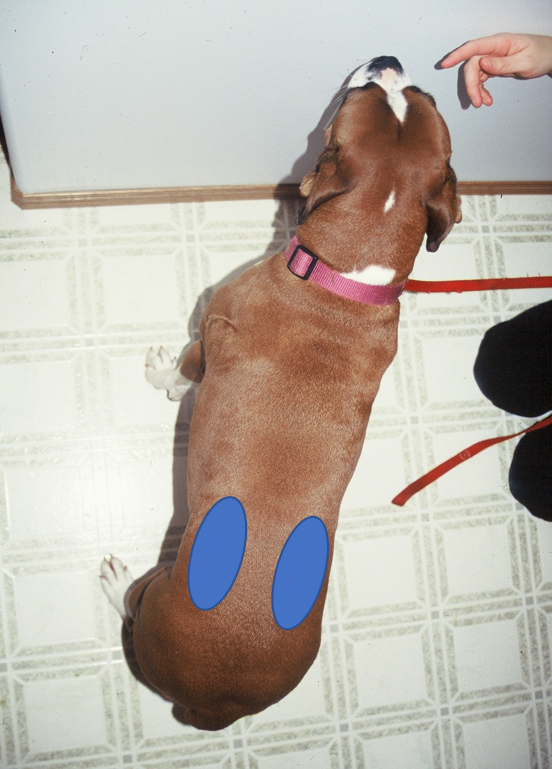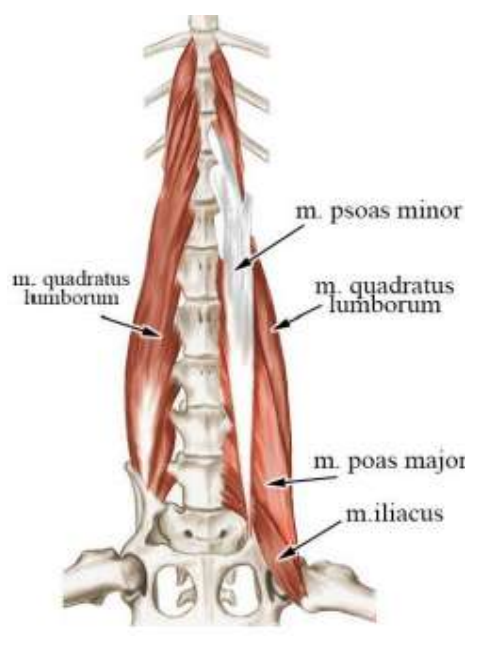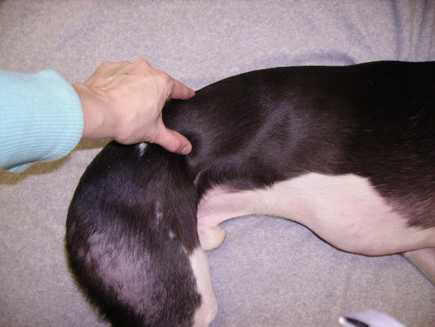Laurie's Blogs.
Oct 2018
A Case of Bulging Epaxials

In this blog, I want to share a bit of a theory with everyone.
Okay, so you’ve all seen (or felt) those older dogs, with tight, thick epaxial muscles in the lumbar spine. I jokingly call them ‘beer cans’… because sometimes they can be that size!
I have a theory about them and what they mean. Here we go!
If you poke at them, they’re not very reactive. Certainly, not like they muscular hypertonicity that you would feel adjacent to a disc lesion. When you palpate them, massage them, squeeze them, you don’t feel any trigger points or tight nodules. If you try to treat them – laser, massage, shockwave, acupuncture, dry needling, or mobilizing the adjacent spine… NOTHING! No improvement. No change. So, what the heck are they?
Hear me out on this…
Firstly, they tend to occur in older dogs.
I have found that there is tenderness ‘underneath’ the ‘beer cans’ – i.e. if you try to palpate the quadratus lumborum.
It has been stated that quadratus lumborum has a bigger role in stabilizing the canine lumbar spine because dogs do not have an iliolumbar ligament, and so quadratus lumborum may take on part of that role.
Quadratus lumborum comes off of the undersurface of the lumbar spine transverse processes, T11 – 13 and the last two ribs and goes down to the medial surface of the ilium.
You’ll also see a correlation in dogs with the bulging epaxials and the presence of spondylosis.
I believe that spondylosis is nothing more than the dog’s body accommodating to excessive motion (i.e. an overly flexible border collie or a tail-less & biomechanically disadvantaged boxer). Both of these can cause wearing of the facet joints and the creation of facet joint extensions ventrally and caudally, which cause ‘round’ facet joints that allow any movement combinations.
Then, with spondylosis, the epaxials muscles won’t have the same degree of function – they won’t change length or function in the same way, because the joints they control don’t function in the same way.
We know that muscles that don’t get used develop fatty infiltration.
And a colleague of mine did a dissection of an older dog and commented that the bulging epaxials were very fatty indeed!
While they are fatty on dissection and feel fatty. They can occur in otherwise very skinny dogs. So, it’s not likely just a ‘weight issue’


Therefore, in summation… if a dog appears to be carrying ‘beer cans’ in its lumbar spine, I think it tells me about the presence of spondylosis.
Feel free to give me a shout and pass along your thoughts on the subject!


